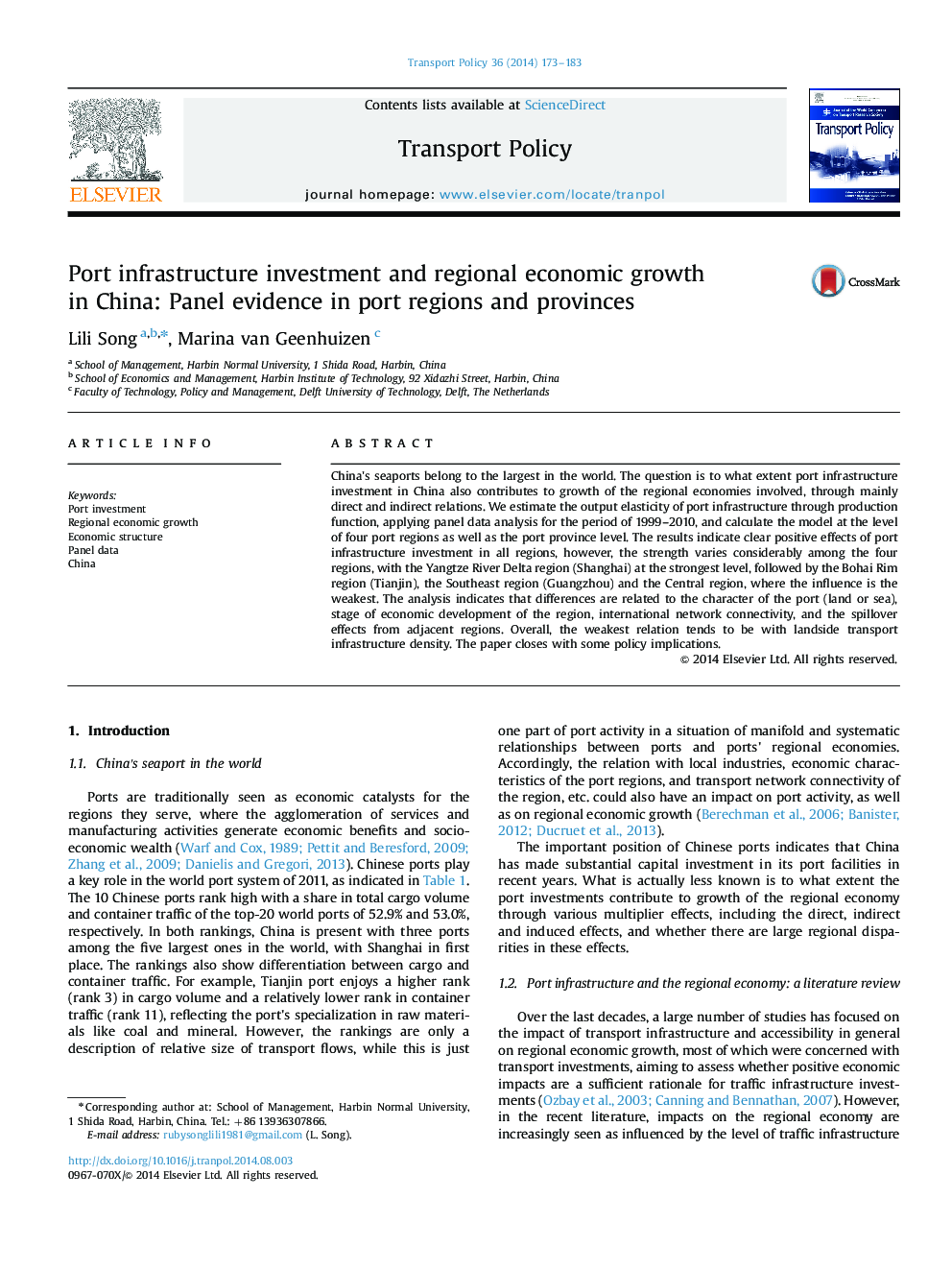| Article ID | Journal | Published Year | Pages | File Type |
|---|---|---|---|---|
| 7497811 | Transport Policy | 2014 | 11 Pages |
Abstract
China׳s seaports belong to the largest in the world. The question is to what extent port infrastructure investment in China also contributes to growth of the regional economies involved, through mainly direct and indirect relations. We estimate the output elasticity of port infrastructure through production function, applying panel data analysis for the period of 1999-2010, and calculate the model at the level of four port regions as well as the port province level. The results indicate clear positive effects of port infrastructure investment in all regions, however, the strength varies considerably among the four regions, with the Yangtze River Delta region (Shanghai) at the strongest level, followed by the Bohai Rim region (Tianjin), the Southeast region (Guangzhou) and the Central region, where the influence is the weakest. The analysis indicates that differences are related to the character of the port (land or sea), stage of economic development of the region, international network connectivity, and the spillover effects from adjacent regions. Overall, the weakest relation tends to be with landside transport infrastructure density. The paper closes with some policy implications.
Related Topics
Social Sciences and Humanities
Social Sciences
Geography, Planning and Development
Authors
Lili Song, Marina van Geenhuizen,
